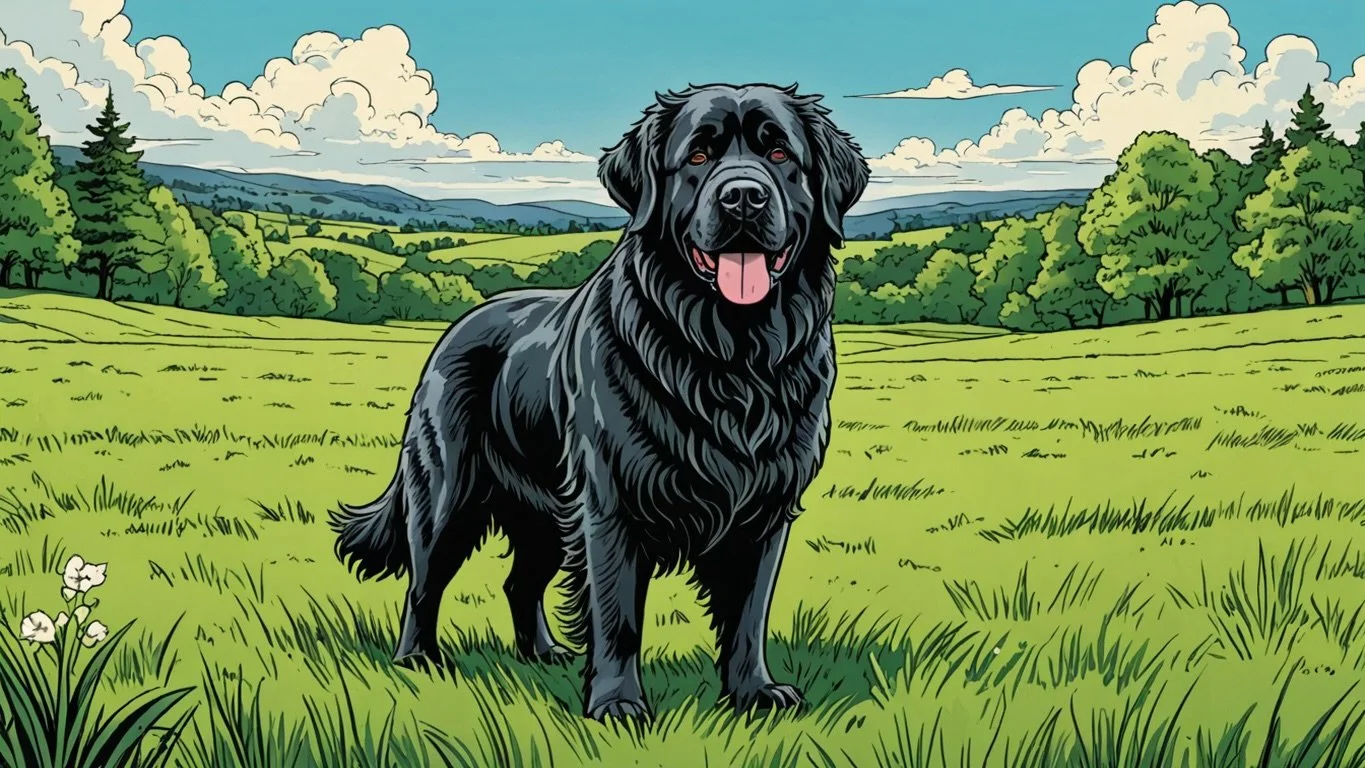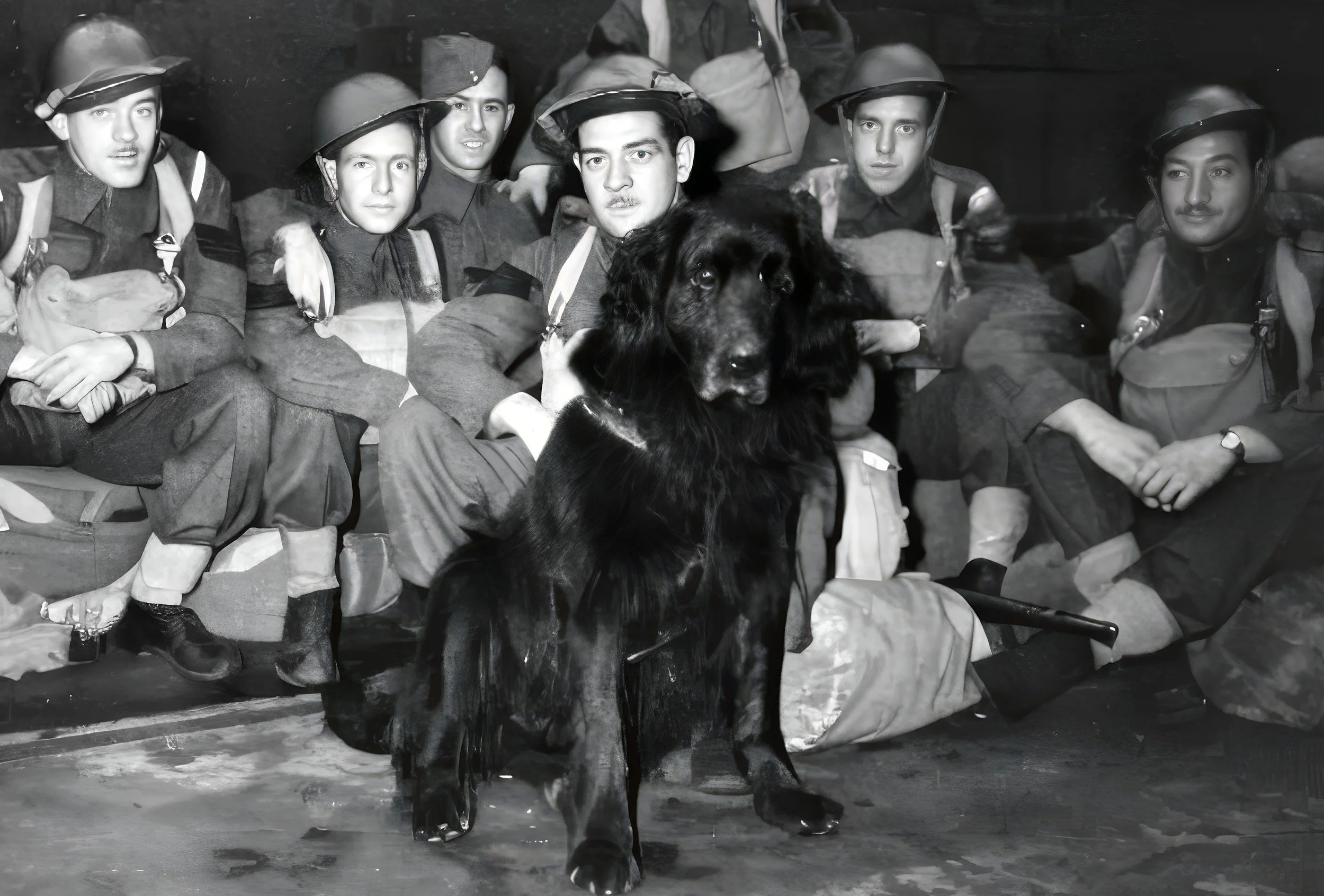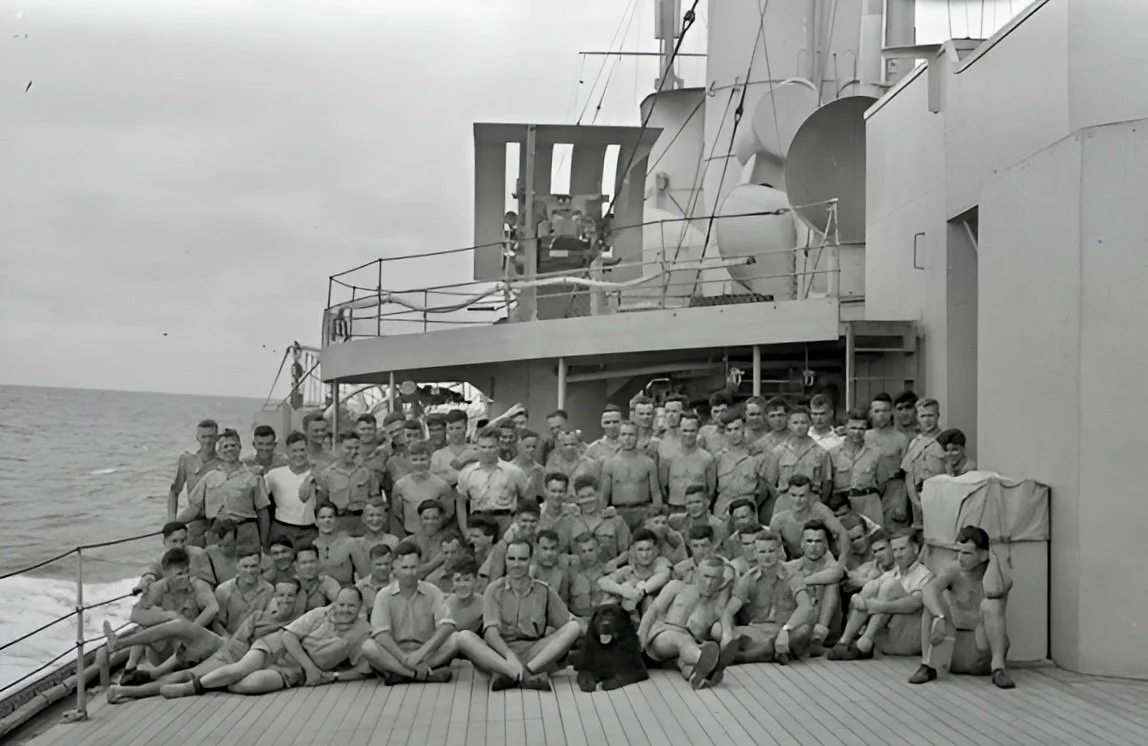Gander, The War Hero Dog
Back in the early days of transatlantic flight, when planes still had to stop and sip fuel before crossing the ocean, Gander Airport was one of the most important waypoints in the world. Pilots called it the “Crossroads of the World.” But before the trucks and tarmacs we know today, fuelling a plane was a low-tech affair — especially in winter.
One of the first refuelling "vehicles" at the airfield was nothing more than a sled with a 45-gallon drum tied on tight. It was hauled across the snowy runways by a dog. A shaggy Newfoundland named Pal.
Pal wasn’t born into a soldier’s life. He had once been a happy dog with a loving family. But one day, during play, he accidentally scratched a child’s face with his paw. Fearing that he might be put down if he stayed with them, the family made a painful decision: they gave him to the Royal Rifles of Canada, who were stationed nearby.
Royal Rifles of Canada and Gander the dog en route to Hong Kong from Vancouver, October 1941, edited. Original uncredited, Public domain, via Wikimedia Commons
And so, Pal found himself at Gander Airport, tugging fuel barrels through snowdrifts and befriending the men in uniform. The soldiers took to him immediately. When the Royal Rifles received orders to deploy to Hong Kong in the fall of 1941, they made sure Pal was coming with them. They gave him a new name —Gander— in honour of the town that raised him.
Infantrymen of C Company, Royal Rifles of Canada and Gander the Dog en route to Hong Kong, November 1941, edited. Original uncredited, Public domain, via Wikimedia Commons
In Hong Kong, far from the icy airfields of home, Gander became more than a symbol for the regiment. He became one of the boys. He kept morale high, padded around the barracks like he owned the place, and —when things got serious— he stood his ground.
Stories from the regiment speak of Gander defending the wounded, standing between soldiers and advancing enemies, and barking with the kind of fury that might make even the bravest soldier think twice. But it was his final act that earned him a place in history.
In December 1941, during a brutal assault, a grenade landed near a group of Canadian soldiers. Gander —once Pal, the airport dog— grabbed the grenade in his mouth and ran toward the enemy, away from his friends. The explosion took his life, but saved theirs.
Some say he didn’t know what he was doing. That maybe, in that final moment, Gander thought it was just a game of fetch. Maybe he saw something flying through the air and did what any good dog would do—he ran toward it. But does it matter?
The truth is he ran toward danger when every instinct should have told him to run the other way. He saw his friends —his family— in peril, and he acted. Whether he knew what he was doing or not, it cost him everything.
And it saved their lives.
In war, intentions are often lost in the smoke and fire. But courage, however it takes shape, leaves a mark. Gander's sacrifice—untrained, unrehearsed, and heartbreakingly pure—was as real as any soldier’s. And for that, he earned his place in history.
Years later, when the Hong Kong Veterans Memorial was erected in Ottawa, survivors insisted that Gander’s name be included alongside the soldiers. And they got their wish. He was posthumously awarded the Dickin Medal — the animal equivalent of the Victoria Cross.
And back in his hometown, there’s a statue that honours him, paws planted firmly, gaze locked forward. A plaque reminds passersby that Gander was a hero. And more than that, he was a very good boy.
Statue of Gander, in Gander Memorial Heritage Park
-
Animal VC' will honour Gander's dash for grenade, The Independent, August 16, 2000.
Gander (dog), Wikipedia
'Much loved' Newfoundland dog Sergeant Gander honoured with statue, CBC, July 24, 2015
Gander the Dog, Valour Canada



